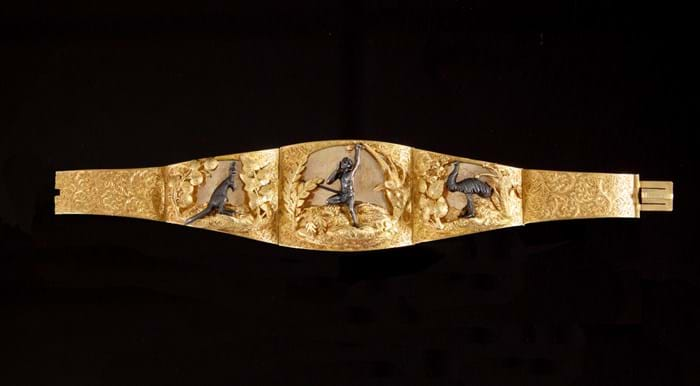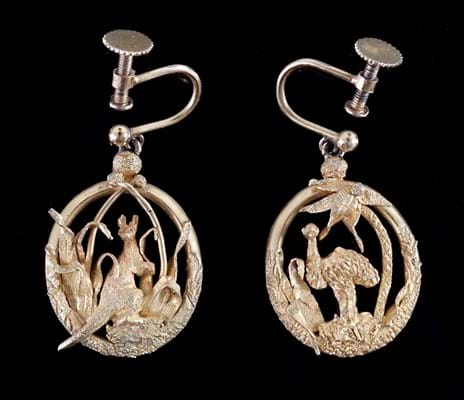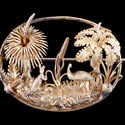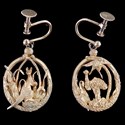The bracelet was one of three pieces that came by direct descent from Hugh Hamilton (1822-1900), the younger son of the Hamiltons of Sundrum in Ayrshire, who in the 1840s opened the Tomabil and Boyd cattle stations on the Lachlan River in New South Wales. After losing most of his herd in a severe drought in 1849, he took on the post of assistant gold commissioner at Ophir, near Bathurst, during the 1851 gold rush but eventually returned successfully to farming.
The distinctive Antipodean jewellery of this period is among the first to depict the native flora and fauna and is of huge cultural significance to Australia and its mining heritage.
Similar objects can be found in the Powerhouse Museum, Sydney, the National Gallery of Victoria, Melbourne, the Queensland Art Gallery, Brisbane, and the National Library of Australia, Canberra.
The bracelet is very much in the style of the Sydney firm of Julius Hogarth and Conrad Erichsen – pioneers of the style – but bears the mark of Christian Ludwig Qwist (1818-77).
A goldsmith and topographical photographer, he worked for Hogarth and Erichsen just prior to their 1861 bankruptcy, and it is likely that the oxidised silver figures of emu, kangaroo and Aborigine would have been supplied by Julius Hogarth c.1863-65.
Few bracelets of this quality survive and this example had been expected to achieve between £6000-8000.
The Chorley’s sale took place on September 20 and the buyer’s premium was 20%.











